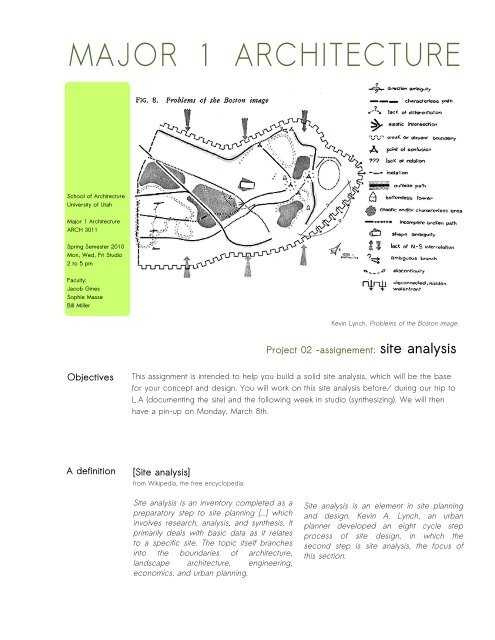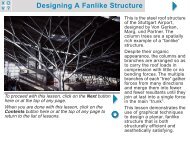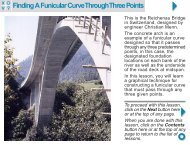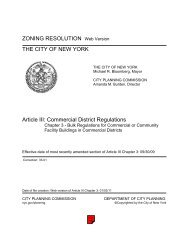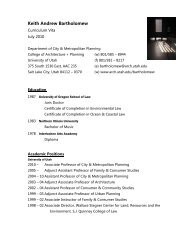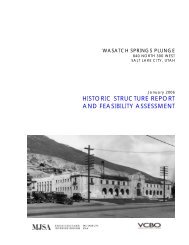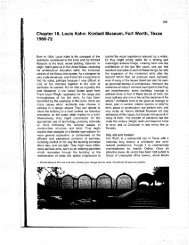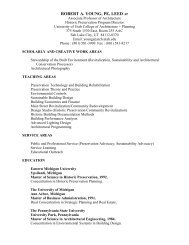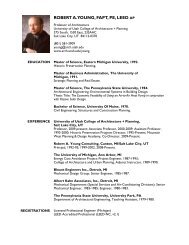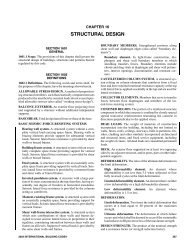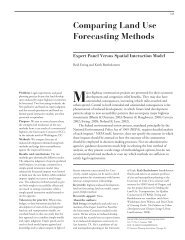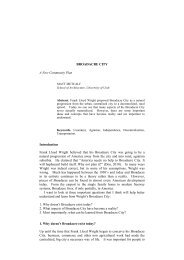Site Analysis 1 - University of Utah Graduate School of Architecture
Site Analysis 1 - University of Utah Graduate School of Architecture
Site Analysis 1 - University of Utah Graduate School of Architecture
Create successful ePaper yourself
Turn your PDF publications into a flip-book with our unique Google optimized e-Paper software.
MAJOR 1 ARCHITECTURE<br />
<strong>School</strong> <strong>of</strong> <strong>Architecture</strong><br />
<strong>University</strong> <strong>of</strong> <strong>Utah</strong><br />
Major 1 <strong>Architecture</strong><br />
ARCH 3011<br />
Spring Semester 2010<br />
Mon, Wed, Fri Studio<br />
2 to 5 pm<br />
Faculty:<br />
Jacob Gines<br />
Sophie Masse<br />
Bill Miller<br />
Objectives<br />
A definition<br />
[<strong>Site</strong> analysis]<br />
from Wikipedia, the free encyclopedia:<br />
<strong>Site</strong> analysis is an inventory completed as a<br />
preparatory step to site planning [...] which<br />
involves research, analysis, and synthesis. It<br />
primarily deals with basic data as it relates<br />
to a specific site. The topic itself branches<br />
into the boundaries <strong>of</strong> architecture,<br />
landscape architecture, engineering,<br />
economics, and urban planning.<br />
Kevin Lynch, Problems <strong>of</strong> the Boston image.<br />
Project 02 -assignement: site analysis<br />
This assignment is intended to help you build a solid site analysis, which will be the base<br />
for your concept and design. You will work on this site analysis before/ during our trip to<br />
L.A (documenting the site) and the following week in studio (synthesizing). We will then<br />
have a pin-up on Monday, March 8th.<br />
<strong>Site</strong> analysis is an element in site planning<br />
and design. Kevin A. Lynch, an urban<br />
planner developed an eight cycle step<br />
process <strong>of</strong> site design, in which the<br />
second step is site analysis, the focus <strong>of</strong><br />
this section.
MAJOR 1 ARCHITECTURE -Spring Semester 2010<br />
Brief<br />
Considering the above definition, the first<br />
step to develop a site analysis is to gather<br />
the most information possible about the<br />
site. It involves searching its past history,<br />
the future development projects (like<br />
Grand Avenue masterplan) and <strong>of</strong> course<br />
document the current condition <strong>of</strong> the<br />
place (consider: history, topography, scale<br />
& density, pedestrian flow, landmarks,<br />
colors, light, day & night settings, smell,<br />
noise...) Thus you are expected to research<br />
at the library, on the internet, and<br />
document in a detailed way your site visit<br />
in L.A. You will then work on combining all<br />
this information in a consistent way,<br />
emphasizing what you consider key<br />
elements to the site and thus defining your<br />
apporach <strong>of</strong> this project.<br />
The following excerpt <strong>of</strong> City sense and<br />
city design: writings and projects <strong>of</strong> Kevin<br />
Lynch (by Kevin Lynch, Tridib Banerjee,<br />
Michael Southworth) is an interesting<br />
example <strong>of</strong> how one can possibly<br />
approach a city/ part <strong>of</strong> a city when one<br />
wants to analyse it. It is intended to evoke<br />
some <strong>of</strong> the elements you may want to<br />
consider for your own site analysis -you<br />
shouldn't limit your investigation to those-<br />
and to allow you to begin questionning<br />
your site.<br />
The annex document contains a series <strong>of</strong><br />
pictures, showing a variety <strong>of</strong> site analysis<br />
(mostly, architecture students works). They<br />
are illustrating different forms your own<br />
analysis could take. Again, these are only a<br />
few examples, mentionning elements that<br />
After reading this, you should prepare the<br />
site visit by questionning/ listing what<br />
major elements you want to look at,<br />
onsite: defining guidelines for your site<br />
visit. you will then complete these basics<br />
by documenting anything else you find<br />
interesting/ intriguing/<br />
characteristic...onsite.<br />
When we are back from L.A, you will have<br />
to work on synthesizing all the elements<br />
you gathered: it is a process <strong>of</strong> selecting,<br />
ordering, presenting the information. This<br />
process is a key component <strong>of</strong> your<br />
project, orienting your future design. By<br />
chosing the characteristics <strong>of</strong> the site you<br />
will focus on/ reveal in the site analysis,<br />
you are already beginning to direct your<br />
project towards some problematic(s),<br />
letting some others aside.<br />
can be crucial to a site, showing ways <strong>of</strong><br />
presenting the information you want to<br />
convey in a consistent manner...They<br />
should help you initiate a reflexion, the aim<br />
being to find your own way <strong>of</strong> analysing<br />
the site and then defining your project.
MAJOR 1 ARCHITECTURE -Spring Semester 2010<br />
Kevin Lynch
MAJOR 1 ARCHITECTURE -Spring Semester 2010


